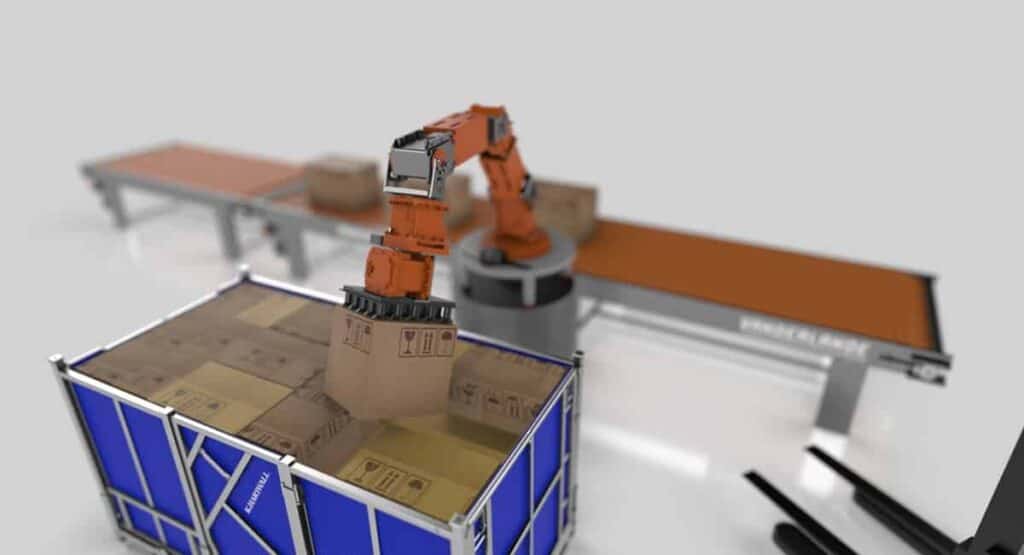This whitepaper will set out Vanderlande’s response to the challenges facing today’s parcel facilities. In doing so, we will question the relevance of loose loads in relation to higher volumes and shorter lead times. We will also make reference to the accessibility and benefits of technologies, such as automated guided vehicles (AGVs), automated warehouse trucks and robotics.
In today’s parcel market, larger volumes, next- and same-day deliveries, timeslot- and location-specific deliveries, as well as a higher diversity of goods are generating fresh challenges for parcel operators.
The frequency of pick-ups is also increasing, while depots face later cut-off times and smaller windows in which to (un)load trucks. The demand for higher throughput in less time is driving the need to re-evaluate the architecture of the modern parcel logistics network.
Speed of technology
Due to the growth of parcel volumes and the development of technology, automated guided vehicles (AGVs) and robots are finding their way into modern sorting centres. In the near future, I believe that they will greatly reduce labour dependency during (un)loading operations.
For example, Toyota’s driverless truck technology – Autopilot – can take over repetitive tasks. It can reduce human involvement to a minimum and guarantee safety thanks to its advanced laser technology.
Exciting applications
Another potential application for sorting centres is robotics. Vision-guided robots already exist that are well equipped to perform retrieval or put-away functions, goods-to-person applications, and other palletising activities.
The latest development has been to facilitate the stacking and unloading of load carriers. The capacity of these robots is around 550 parcels per hour (pph), which makes them faster than an operator filling a loose load truck (around 400pph).

A third development is asset management, driven by low-energy Bluetooth. This enables users to see exactly how many units are in their control and where they are. The technology will give real-time transparency of assets in use and in storage, as well as identifying if items have been lost.
Loose load versus load carrier
For parcel operators, there are interesting comparisons to be made between load carriers and loose load technologies, with the benefits of load carriers particularly clear. At the receiving area, less time and labour are required to load and unload trucks, while a continuous flow of goods can be maintained.
Load carriers can also make pick-ups more frequently, which helps to facilitate later cut-off times. Packages can be pre-sorted, paving the way for ‘zone skipping’. One of the defining questions however, is whether the combination of new technologies and load carriers is more effective than loose loads.
Assessing the potential
A recent study by Vanderlande explored the possibilities for automated technologies. We analysed the advantages of newer technologies, beginning with a comparison of loose loads and load carriers.
Our conclusion was that cost savings for parcel companies depended on the individual business cases. However, the development of technologies, such as AGVs and robotics, and the use of load carriers, made it possible to improve the logistics network, meet new market demands and reduce parcel sortation costs.
I am confident that AGVs and robotics are a game changer for loose loads, and that this concept will be replaced by load carriers. More parcels will be transported with load carriers if a higher level of material handling automation is required, resulting in smarter, more cost-effective, and faster solutions.